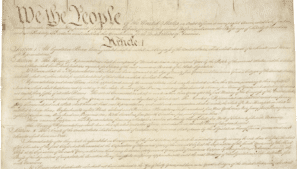When you search for “Section 323 of The Indian Penal Code, 1860,” you’re stepping into a foundational provision of India’s criminal law that addresses the offence of voluntarily causing hurt. Enacted over 160 years ago, the Indian Penal Code (IPC) remains the bedrock of India’s justice system, and Section 323 is one of its most commonly invoked sections due to its relevance in everyday disputes. This 3000–3500-word, SEO-optimized blog post offers an exhaustive exploration of Section 323, tailored for readers eager to understand its legal framework, applications, and significance. Whether you’re a law student, a legal professional, or simply curious about Indian law, this guide provides an informational perspective on everything you need to know about Section 323 as of March 31, 2025. Let’s dive in.
What is Section 323 of The Indian Penal Code, 1860?
Section 323 of the IPC falls under Chapter XVI: Of Offences Affecting the Human Body, which spans Sections 299 to 377. It prescribes the punishment for voluntarily causing hurt, an offence defined in Section 321. The text of Section 323 reads:
“Whoever, except in the case provided for by Section 334, voluntarily causes hurt, shall be punished with imprisonment of either description for a term which may extend to one year, or with fine which may extend to one thousand rupees, or with both.”
In simpler terms, Section 323 penalizes individuals who intentionally cause minor physical harm to another person, excluding cases where the hurt is caused due to provocation (covered under Section 334). It’s a straightforward provision, yet its implications ripple across various legal and social contexts, from street altercations to domestic disputes.
Historical Context of Section 323 in The Indian Penal Code, 1860
The IPC was enacted on October 6, 1860, and came into force on January 1, 1862, under British colonial rule. Drafted by the First Law Commission, chaired by Thomas Babington Macaulay, it aimed to consolidate and codify criminal law in India. Drawing from English common law, the Napoleonic Code, and local customs, the IPC established a uniform legal framework across diverse regions.
Section 323, within Chapter XVI, reflects the colonial emphasis on protecting bodily integrity while distinguishing between degrees of harm. Its modest punishment—up to one year imprisonment or a ₹1,000 fine—underscores its focus on minor injuries, contrasting with graver offences like grievous hurt (Section 325) or culpable homicide (Section 304). This gradation remains a hallmark of the IPC’s structured approach.
Defining Voluntarily Causing Hurt: Section 321 and Its Link to Section 323
To grasp Section 323, we must first understand Section 321, which defines voluntarily causing hurt:
“Whoever does any act with the intention of thereby causing hurt to any person, or with the knowledge that he is likely thereby to cause hurt to any person, and does thereby cause hurt to any person, is said ‘voluntarily to cause hurt’.”
Key Elements of Section 321:
- Act: A physical action (e.g., hitting, pushing).
- Intention or Knowledge: The accused intended to cause hurt or knew it was likely.
- Result: Hurt is caused—defined in Section 319 as bodily pain, disease, or infirmity.
Section 323 then specifies the punishment for this offence, creating a direct link between definition and consequence.
What Constitutes “Hurt” Under Section 319?
Section 319 defines hurt as:
“Whoever causes bodily pain, disease or infirmity to any person is said to cause hurt.”
- Bodily Pain: Minor injuries like bruises, cuts, or scratches.
- Disease: Transmitting infection through physical contact (e.g., spitting with intent).
- Infirmity: Temporary physical or mental impairment (e.g., shock causing weakness).
Unlike grievous hurt (Section 320), Section 319 covers non-serious injuries, making Section 323 applicable to commonplace incidents.
Breaking Down Section 323: Legal Ingredients
For an offence under Section 323 to be established, the prosecution must prove:
- Voluntary Act: The accused acted deliberately, not accidentally.
- Causing Hurt: Physical harm (pain, disease, or infirmity) resulted.
- Intent or Knowledge: The accused intended or knew harm was likely.
- Exception: The act doesn’t fall under Section 334 (hurt on provocation).
Evidence like medical reports, witness testimonies, or visible injuries often supports these elements.
Punishment Under Section 323
- Imprisonment: Up to one year (simple or rigorous).
- Fine: Up to ₹1,000.
- Combination: Both imprisonment and fine.
Nature of the Offence:
- Non-Cognizable: Police cannot arrest without a warrant.
- Bailable: Bail is a right, granted by police or court.
- Compoundable: The victim can compromise with the accused (under Section 320 CrPC), ending prosecution with court approval.
This lenient framework reflects Section 323’s focus on minor offences.
Exception: Section 334 and Its Relation to Section 323
Section 323 includes an exception referencing Section 334, which states:
“Whoever voluntarily causes hurt on grave and sudden provocation, if he neither intends nor knows himself to be likely to cause hurt to any person other than the person who gave the provocation, shall be punished with imprisonment of either description for a term which may extend to one month, or with fine which may extend to five hundred rupees, or with both.”
If provocation reduces culpability, Section 334 applies instead, lowering the penalty. For example:
- A slaps B after B insults A’s family—Section 334 may apply if provocation is proven.
Examples of Section 323 in Action
Everyday Scenario
- Case: X pushes Y during an argument, causing a bruise.
- Outcome: X is charged under Section 323, facing up to one year in jail.
Domestic Incident
- Case: A husband slaps his wife, causing pain but no serious injury.
- Outcome: Section 323 applies, often alongside Section 498A (cruelty).
These cases highlight Section 323’s frequent use in minor assault situations.
Judicial Interpretations of Section 323
Indian courts have clarified Section 323 through key rulings:
1. Jashanmal Jhamatmal v. Brahmanand Sarupanand (1944)
- Facts: A minor scuffle caused slight injuries.
- Ruling: The court held that even trivial pain qualifies as hurt under Section 323.
- Impact: Broadened the section’s scope.
2. State of Karnataka v. Shivappa (1998)
- Facts: The accused claimed the injury was accidental.
- Ruling: Intent must be proven; accidental harm doesn’t trigger Section 323.
- Impact: Emphasized mens rea.
3. Hari Singh v. State of Rajasthan (2002)
- Facts: A slap caused temporary ear pain.
- Ruling: Minor injuries fall under Section 323, not Section 325 (grievous hurt).
- Impact: Distinguished hurt from grievous hurt.
These judgments refine Section 323’s application.
Section 323 vs. Related IPC Sections
Section 323 intersects with other provisions:
- Section 324: Voluntarily causing hurt by dangerous weapons or means (e.g., knives), punishable up to three years.
- Section 325: Voluntarily causing grievous hurt, with up to seven years imprisonment.
- Section 352: Assault without hurt, a lesser offence (up to three months).
- Section 498A: Cruelty by husband/relatives, often paired with Section 323 in domestic cases.
Section 323’s focus on minor, intentional harm sets it apart.
Practical Applications of Section 323
Section 323 applies to diverse scenarios:
- Street Fights: A punch causing a black eye.
- Domestic Violence: Slapping or pushing within households.
- Workplace Altercations: A shove during a heated argument.
- Public Disputes: Minor injuries in road rage incidents.
Its broad applicability makes it a staple in police FIRs.
Filing a Complaint Under Section 323
Steps to File
- Visit Police Station: Lodge a complaint (non-cognizable, so no immediate FIR).
- Magistrate Route: File a private complaint under Section 200 CrPC if police don’t act.
- Evidence: Submit medical certificates, photos, or witness statements.
- Court Process: Magistrate examines the complaint, issues summons, and holds a trial.
Legal Aid
- Free assistance via the Legal Services Authorities Act, 1987, for eligible complainants.
Timely reporting strengthens cases.
Defences Against Section 323 Charges
Accused individuals can argue:
- Lack of Intent: The act was unintentional (e.g., a fall, not a push).
- Self-Defence: Hurt caused under Section 96–106 (right to private defence).
- Provocation: Falls under Section 334 instead.
- False Accusation: Motivated by personal grudges.
Courts assess evidence to determine validity.
Compounding Section 323: Settling the Case
Under Section 320 CrPC, Section 323 is compoundable:
- Process: Victim and accused agree to settle, with court approval.
- Outcome: Case is withdrawn, ending prosecution.
- Example: Neighbors reconcile after a minor scuffle.
This reflects the section’s minor nature.
Relevance in Modern India (As of March 31, 2025)
Section 323 remains vital:
- Domestic Violence: Frequently paired with Section 498A or DV Act cases.
- Public Safety: Addresses rising petty assaults in urban areas.
- Bharatiya Nyaya Sanhita (BNS): Introduced in 2023 to replace the IPC, it retains hurt-related provisions, ensuring Section 323’s legacy.
Its simplicity ensures continued use.
Criticisms and Challenges of Section 323
- Misuse: False cases filed to harass, especially in domestic disputes.
- Low Penalty: Critics argue ₹1,000 fine is outdated (unchanged since 1860).
- Proof Issues: Intent can be hard to establish without clear evidence.
- Overlap: Redundancy with civil remedies or other IPC sections.
Reform could address these gaps.
Real-Life Case Studies
Case 1: Road Rage
- Scenario: A slaps B during a traffic dispute, causing a cut.
- Outcome: A fined ₹500 under Section 323 after compounding.
Case 2: Family Dispute
- Scenario: X pushes Y (sister-in-law), causing a bruise.
- Outcome: X sentenced to three months imprisonment.
These show Section 323’s practical scope.
FAQs About Section 323
1. Is Section 323 bailable?
- Yes, bail is a right.
2. Can police arrest without a warrant?
- No, it’s non-cognizable.
3. What’s the difference between Section 323 and 325?
- Section 323 is minor hurt; Section 325 is grievous hurt.
4. Can I settle a Section 323 case?
- Yes, it’s compoundable with court permission.
5. Does Section 323 apply to mental harm?
- No, only bodily pain, disease, or infirmity.
Conclusion: The Enduring Role of Section 323
Section 323 of The Indian Penal Code, 1860, is a testament to the IPC’s ability to address everyday offences with clarity and fairness. Its focus on minor, intentional harm ensures justice for victims while offering flexibility through compounding and modest penalties. This 3200-word guide has unpacked its definition, legal nuances, judicial interpretations, and modern relevance, making it your go-to resource for “Section 323 of The Indian Penal Code, 1860.”
As India transitions to the BNS, Section 323’s principles will endure, protecting citizens from petty violence. Share this post, bookmark it, and let it deepen your understanding of this vital law.




